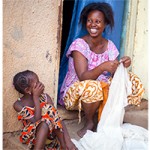Urban Youth Today: Fueling our World, and the Generations of Tomorrow
Join the discussion, and ask, “what works?” for youth in SBCC and SRH programming
WHEN:
Thursday, Oct. 16, 2013
9 am – 5 pm
WHERE:
Washington Plaza Hotel
10 Thomas Circle Northwest
Washington, D.C., DC 20005
Youth represent the world of tomorrow, and a heightening force in urban environments around the globe today. According to the UNFPA’s State of the World Population’s 2007 Youth Supplement, Growing Up Urban, “[t]he world is undergoing the largest wave of urban growth in history.” Exciting opportunities face adolescents in urban centers. There are higher concentrations of learning institutions and schools, increased access to health care, gateways to the Internet and global perspectives, and a wider variety of jobs, employment opportunities and paths to economic self-sufficiency. Government services and infrastructure – piped water, electricity, transportation, sewers, roads – offer chances to perhaps escape the poverty experienced in rural environs.
However, countless youths who pursue these hopes in cities often find themselves snared in a daunting reality. Education can become impossible to balance with earning money to pay rent, eat or support family. Health care may be far away or cost prohibitive. Affordable housing might be unsafe, unsanitary, temporary or non-existent. When well-paying jobs are outnumbered by those seeking them, young adults may pursue employment in the “informal sector,” opening them up to exploitation, abuse and unsafe working conditions. If no jobs can be found, men may turn to crime, women to transactional sex. All of these factors negatively impact adolescent sexual and reproductive health. Gender inequities boil to the surface as fertility rates in poorer populations spike. Young women find themselves coerced into sex, and at an increased risk for HIV, STIs and unwanted pregnancies – with feelings of no recourse, often unaware of sexual and reproductive health (SRH) resources – leading to a generation with limited options of breaking these cycles.
But hope is on the horizon. Social and behavior change communication (SBCC) has been identified as a successful strategy for reaching youth on SRH issues but programs targeted at urban youth face key challenges, such as social marginalization, a mobile population, informal settlements and violence and crime. Urban areas offer exciting and crucial opportunities, such as access to media, new technologies and high population-density. This is the impetus for an upcoming HC3 evidence exchange forum, which will ask field experts, “what works” in SBCC and urban youth SRH programming?
Join the discussion in Washington, DC, on October 16, 2013, at the Washington Plaza Hotel. Interact with international and domestic implementers of SBCC and urban youth SRH activities from Population Services International, Pathfinder, the Johns Hopkins University Center for Communication Programs, the Baltimore City Health Department/B’More for Healthy Babies, and more to find out “what works” in creating happy, healthy, and informed global generations.
For more information on the event, and its follow-on webinars later this month, contact Erin Portillo.







Leave a Reply
Want to join the discussion?Feel free to contribute!